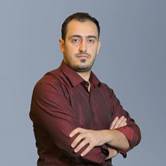Kurdistan


An exhumation of a mass grave in southern Iraq containing Kurds killed during the Anfal campaign. Photo: Rudaw
ERBIL, Kurdistan Region — Of three known mass graves containing the remains of Kurds who were massacred during Saddam Hussein’s Anfal campaign against Kurds, one has finished and the remaining two will be exhumed after Eid of al-Adha.
In the first mass grave, more than 170 remains were exhumed, Sirwan Jalal, head of the Mass Graves Department from the Martyrs and Anfal Affairs Ministry of the Kurdistan Regional Government (KRG), told Rudaw.
"In the mass grave, 171 bodies were exhumed including 74 children and 97 women," Jalal said. "Today, all the remains were taken to forensic department [in Baghdad] for DNA examinations."
Jalal said work on the remaining two mass graves will start after the Islamic Eid al-Adha holiday in mid-August. The graves are in the southern Iraqi city of Samawa and are the only three known mass graves of Anfal victims in the country.
Fuad Osman, spokesman of the Martyrs and Anfal Affairs Ministry, said that in addition to the three discovered mass graves, they expect "more mass graves in the area.”
“But what is so far clear to us is that, there are another two mass graves and after Eid we will do our exhumation work,” he told Rudaw.
He added the mass graves contain more bodies than what was originally estimated.
"For example, in the first mass grave we predicted it had contained only 80 corpses, but as work continued, it turned out it contained 171 remains," said Osman.
The exhumation of the first mass grave was temporarily paused after Iraqi authorities on July 27 took into consideration grievances of Teimour Abdulla, the lone survivor of a mass murder in Samawa in 1988. He was disturbed by the process while seeing the exhumations first-hand. The exhumation resumed two days later.
More than 182,000 people are believed to have been killed during the Anfal campaign, an ethnic cleansing campaign against Kurds at the end of the Iran-Iraq War. Anfal is the eighth sura, or chapter, in the Quran, and was the codename used by the Baath regime of former Iraqi president Saddam Hussein for the slaughter.
The main Anfal campaign took place over eight phases, reaching its climax in 1988 with the Halabja chemical gas attack that instantly killed 5,000 people and injured others in the closing weeks of the Iran-Iraq war.
In the first mass grave, more than 170 remains were exhumed, Sirwan Jalal, head of the Mass Graves Department from the Martyrs and Anfal Affairs Ministry of the Kurdistan Regional Government (KRG), told Rudaw.
"In the mass grave, 171 bodies were exhumed including 74 children and 97 women," Jalal said. "Today, all the remains were taken to forensic department [in Baghdad] for DNA examinations."
Jalal said work on the remaining two mass graves will start after the Islamic Eid al-Adha holiday in mid-August. The graves are in the southern Iraqi city of Samawa and are the only three known mass graves of Anfal victims in the country.
Fuad Osman, spokesman of the Martyrs and Anfal Affairs Ministry, said that in addition to the three discovered mass graves, they expect "more mass graves in the area.”
“But what is so far clear to us is that, there are another two mass graves and after Eid we will do our exhumation work,” he told Rudaw.
He added the mass graves contain more bodies than what was originally estimated.
"For example, in the first mass grave we predicted it had contained only 80 corpses, but as work continued, it turned out it contained 171 remains," said Osman.
The exhumation of the first mass grave was temporarily paused after Iraqi authorities on July 27 took into consideration grievances of Teimour Abdulla, the lone survivor of a mass murder in Samawa in 1988. He was disturbed by the process while seeing the exhumations first-hand. The exhumation resumed two days later.
More than 182,000 people are believed to have been killed during the Anfal campaign, an ethnic cleansing campaign against Kurds at the end of the Iran-Iraq War. Anfal is the eighth sura, or chapter, in the Quran, and was the codename used by the Baath regime of former Iraqi president Saddam Hussein for the slaughter.
The main Anfal campaign took place over eight phases, reaching its climax in 1988 with the Halabja chemical gas attack that instantly killed 5,000 people and injured others in the closing weeks of the Iran-Iraq war.









Comments
Rudaw moderates all comments submitted on our website. We welcome comments which are relevant to the article and encourage further discussion about the issues that matter to you. We also welcome constructive criticism about Rudaw.
To be approved for publication, however, your comments must meet our community guidelines.
We will not tolerate the following: profanity, threats, personal attacks, vulgarity, abuse (such as sexism, racism, homophobia or xenophobia), or commercial or personal promotion.
Comments that do not meet our guidelines will be rejected. Comments are not edited – they are either approved or rejected.
Post a comment